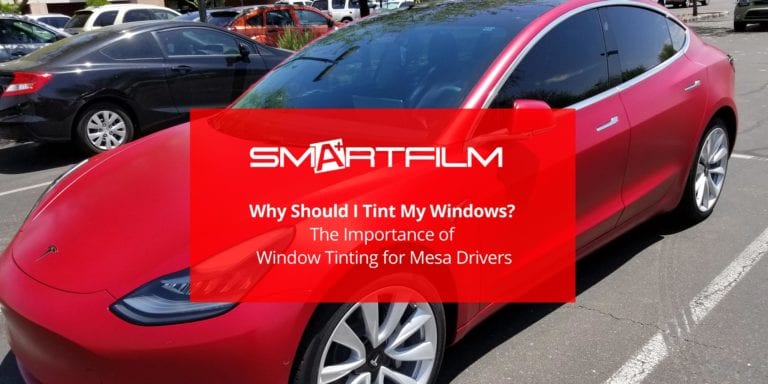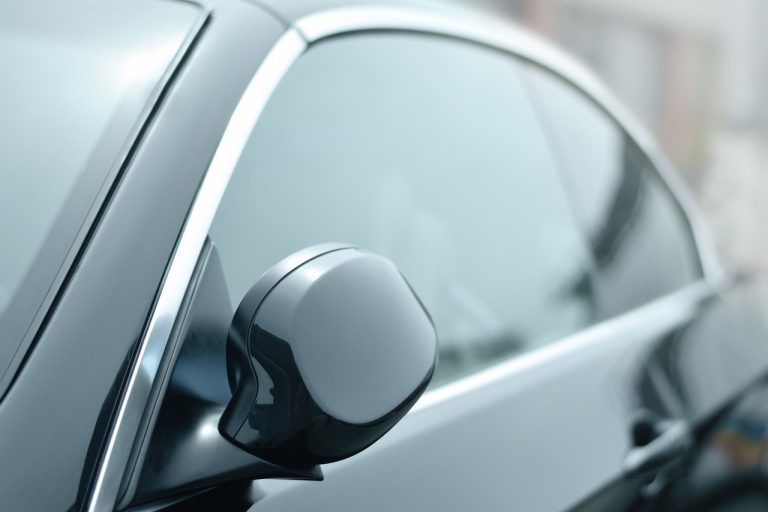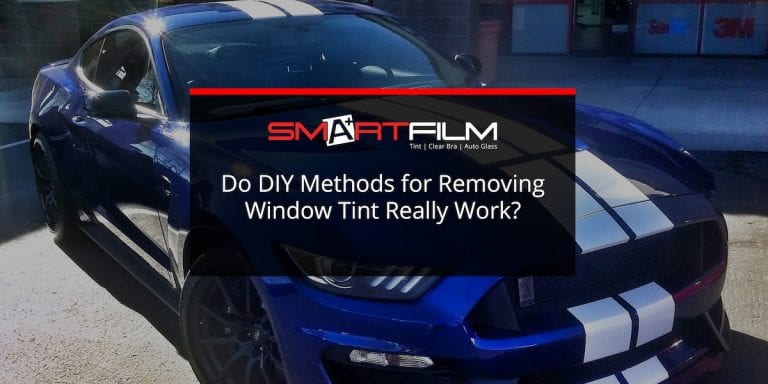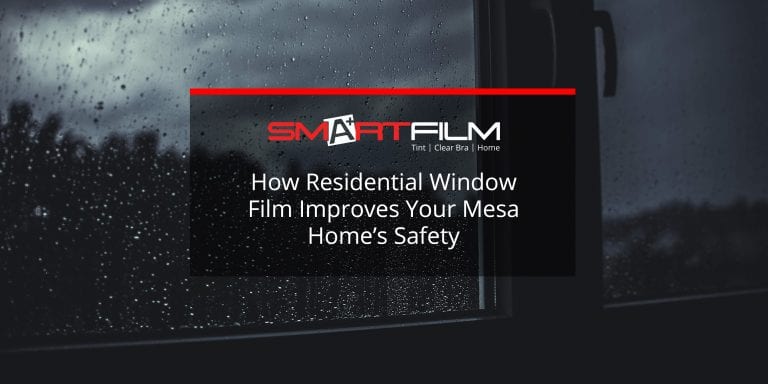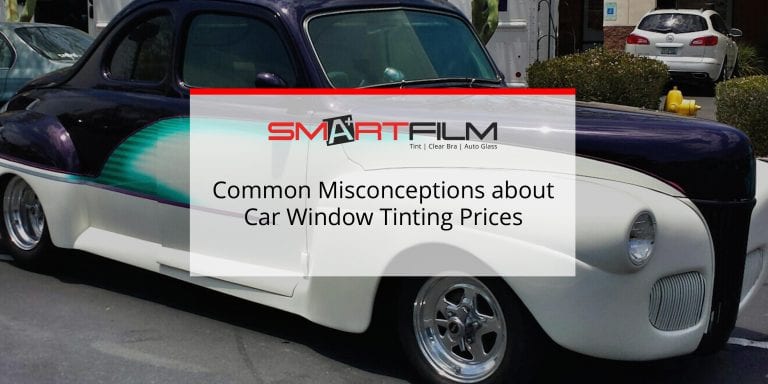Is Window Tint Legal in Arizona? (2026 Guide)
Picture this: You slide into your car on a scorching Phoenix afternoon, and instead of melting into your seat, you’re sitting cool and comfortable, thanks to your perfectly tinted windows.
But before you thank your window film installer, here’s the million-dollar question: Is your window tint actually legal in Arizona in 2026?
Arizona’s heat makes tinting a no-brainer, but the state laws surrounding visible light transmission, reflectivity, and color restrictions can be tricky.
Go too dark or too shiny, and you might end up with a tint ticket faster than your AC can cool the cabin. The goal is simple: find that sweet spot where comfort meets compliance.
In this 2026 guide, we’ll explain every detail Arizona drivers need to know, including:
- Legal Tint Percentages in Arizona
- Reflectivity & Color Restrictions
- Medical Exemptions in Arizona
- Penalties & Enforcement
- Relevant Arizona Statutes & Legal Text
Whether you’re tinting your front side windows, checking your rear window, or replacing old film, this guide will help you identify legal tinting that protects your car, your skin, and your wallet, all while keeping your ride looking sharp under the Arizona sun.
Arizona Tint Laws: Overview

Legally, window tinting in Arizona refers to applying a transparent film to a vehicle’s windows to reduce sunlight, glare, and heat, while still meeting the state’s visibility standards.
The law regulates how dark or reflective the tint can be through Visible Light Transmission, which measures the percentage of light that must pass through the glass.
Arizona requires specific VLT levels for each window to maintain driver visibility and road safety. Installing tint that exceeds these limits can result in a tint ticket, fines, or required removal to meet Arizona’s legal tint regulations.
What is Visible Light Transmission (VLT)?
Visible Light Transmission, or VLT, measures how much visible light can pass through your car’s windows after tint is applied. It’s expressed as a percentage, combining both your window glass and window film.
Think of it like sunglasses for your car:
- Higher VLT = lighter tint (lets in more light).
- Lower VLT = darker tint (blocks more light).
Here’s a quick breakdown to help you visualize it:
| VLT % | Light Allowed Through | How It Looks |
| 70% | Most light passes | Barely tinted, very clear |
| 50% | About half passes | Light shading |
| 33% | 1/3 of light passes | Legal front tint in Arizona |
| 20% | Only 1/5 passes | Dark, privacy-level tint |
| 5% | Almost no light passes | Limo-style dark tint |
According to Arizona tint laws, your front side windows must let in at least 33% visible light, while rear and back windows can be darker. Going below these limits can lead to a tint ticket or even a failed inspection.
So before you tint, check the Arizona tint percentage chart or ask SmartfilmAZ for expert help. We’ll make sure your window tint darkness keeps you cool, compliant, and looking sharp under the Arizona sun.
Legal Tint Percentages in Arizona (2026 Update)
Arizona’s sunshine may be glorious, but when you’re driving under it every day, a good window tint can make all the difference. Still, the state law is clear; there’s a fine line between staying cool and breaking the rules.
| Window Type | Legal VLT Limit | Reflectivity Rule | Notes |
| Front Side Windows | Minimum 33% VLT | Non-reflective only | Must allow at least 33% visible light |
| Rear Side Windows | Any VLT allowed (with dual mirrors) | Non-reflective only | Dual side mirrors required |
| Rear Window | Any VLT allowed (with dual mirrors) | Non-reflective only | Mirrors ensure safe visibility |
| Windshield | Non-reflective tint above AS-1 line | No mirrored or metallic film | Only top strip permitted |
Read our article: How Dark Can You Go? Understanding Arizona Tint Percentage Rules
Front Side Windows: 33% VLT Required
For front side windows, Arizona law requires at least 33% Visible Light Transmission. That means your tint must let one-third of natural light into the cabin. Anything darker than this limit is illegal and may result in a tint ticket, fines, or even an order to remove and replace the film.
Why the restriction? It’s all about driver visibility and safety, especially at night or in low-light conditions. So, while a dark tint may look sleek, it can also attract unwanted attention from law enforcement.
Rear Side Windows: Any Tint Allowed (if Dual Mirrors)
When it comes to rear side windows, Arizona offers more flexibility. Drivers can install any level of tint darkness (even limo-dark film) as long as the vehicle has dual side mirrors installed.
This rule ensures that the driver can still see behind the car safely, even if the rear or back windows are heavily tinted. This makes sense for SUVs, trucks, and larger vehicles where privacy and UV protection are priorities.
Windshield Tint: Non-Reflective Above AS-1 Line
Arizona’s windshield tint law is stricter. Only a non-reflective tint is allowed above the AS-1 line, a marking found on most windshields, usually about five inches from the top edge.
This small strip helps reduce glare from the sun without obstructing the driver’s vision. Reflective or metallic films below the AS-1 line are prohibited under Arizona state law and can lead to a violation if detected.
Tint Reflection & Tint Colors Restrictions

Arizona’s tint laws don’t just regulate how dark your windows can be; they also set limits on reflectivity and color.
These rules are designed to protect visibility, reduce glare for other drivers, and ensure that vehicles remain safe and compliant under state law.
Reflectivity Limits: 35%
Reflective or “mirror-like” tints may look futuristic, but Arizona limits window tint reflection to no more than 35% on both front and rear side windows. Reflective tint can bounce sunlight directly into the eyes of oncoming drivers, creating hazardous glare and visibility issues.
By keeping reflectivity within this 35% cap, Arizona ensures a balance between heat reduction and road safety, allowing your tint to block UV rays and solar heat without turning your car into a moving mirror.
Prohibited Colors: Red and Amber
Under Arizona window tint laws, red and amber tints are strictly prohibited. These colors can be mistaken for emergency or warning lights, which can confuse other drivers, especially in low-visibility conditions.
Sticking to approved colors such as gray, black, bronze, or charcoal ensures your vehicle remains stylish, visible, and compliant. Always consult a professional installer to verify that your chosen window film meets Arizona’s reflectivity and color regulations.
Medical Exemptions in Arizona

While most drivers must follow standard Arizona tint laws, the state makes exceptions for individuals with specific medical conditions that require extra protection from sunlight.
These medical tint exemptions allow darker window films than typically permitted, helping qualified drivers stay safe and comfortable on Arizona’s sun-drenched roads.
Eligibility & Qualifying Conditions
To qualify, you must have a medical condition that makes you sensitive to UV rays or direct sunlight. Common qualifying conditions include lupus, photosensitivity, xeroderma pigmentosum, albinism, and other disorders that cause severe skin or eye sensitivity. A licensed medical provider must verify your diagnosis and recommend darker tint levels for protection.
Application Process & Documentation
You can apply for a medical exemption through the Arizona Department of Transportation (ADOT) or Motor Vehicle Division (MVD). The process typically involves:
- Obtaining a doctor’s statement confirming your medical condition.
- Completing the official Medical Exemption Application Form.
- Submit it to ADOT/MVD for review and approval.
Displaying Exemption Certificate
Once approved, you’ll receive an exemption certificate that must be carried in your vehicle at all times. If stopped by law enforcement, drivers are required to present this documentation to verify that their darker tint is legally permitted under Arizona’s medical exemption law.
Penalties & Enforcement

Ignoring Arizona tint laws might seem harmless until you see flashing lights in your rearview mirror. While tinted windows can improve comfort and privacy, going darker than the legal VLT limit can result in costly consequences. The state enforces these laws strictly to maintain visibility and safety for all drivers.
Typical Fines and Citations
Violating Arizona’s window tint regulations is treated as a civil traffic offense. Drivers caught with illegal tint may receive a tint ticket. Repeat offenders could face higher penalties or be required to remove the tint immediately.
How Arizona Police Measure Tint
During enforcement stops, officers use a tint meter, a handheld device that measures the Visible Light Transmission percentage through your car’s windows. If your VLT reads below the legal limit of 33% for front side windows, you could be cited on the spot. These tools provide quick and accurate readings to ensure fair enforcement.
Appeal & Removal Process
If cited, drivers can either appeal the citation in court by presenting evidence (such as a medical exemption certificate) or remove the illegal tint to meet Arizona’s legal standards. Once corrected, proof of compliance may reduce or dismiss fines.
Relevant Arizona Statutes & Permitted Text
Understanding Arizona’s window tint laws starts with knowing where they come from. The state’s official regulations are outlined in the ARS, specifically § 28-959.01, which details the legal limits for VLT, reflectivity, and tint color restrictions.
Referring directly to this statute ensures that drivers, installers, and law enforcement all follow the same legal standards.
ARS § 28-959.01
This section of Arizona law sets the foundation for all vehicle window tint laws in the state. It specifies that:
- Front side windows must allow at least 33% visible light transmission.
- Windshields may only have non-reflective tint above the AS-1 line (a manufacturer’s marking near the top of the glass).
- Rear side and back windows may have any tint darkness if the vehicle has dual side mirrors for visibility.
- Reflectivity must not exceed 35%, and red or amber tints are strictly prohibited.
Violating these provisions can result in fines or a fix-it ticket requiring you to remove or replace illegal film. You can read the full law directly on the Arizona State Legislature website.
Tips to Stay Compliant in 2026
Arizona’s tint regulations help keep roads safe and drivers protected, but staying compliant doesn’t have to be complicated. With the right knowledge (and installer), you can enjoy UV protection, privacy, and style without risking a ticket.
Choosing the Right Legal Tint %
To avoid violations, choose tint levels that align with Arizona’s legal VLT percentages. For most vehicles, that means:
- Front side windows: 33% VLT or lighter.
- Rear and back side windows: Check for any darkness when using dual mirrors.
- If in doubt, consult a professional installer like SmartfilmAZ, who can measure your existing tint and ensure your film complies with state law.
Keep Paperwork in Your Car
Always carry your installation receipt, manufacturer’s film certificate, or medical exemption documentation in your glove box. If you’re stopped, showing proof of compliance can save you time, stress, and potentially a fine.
When to Check or Retest Tint
Over time, window film can degrade, fading, peeling, or reducing its visible light transmission percentage. Environmental exposure, cleaning products, and UV damage can all alter the film’s performance.
If your tint is several years old, it’s smart to retest your VLT using a professional tint meter. Even if it was legal at installation, aging film can darken or lose clarity, putting you at risk of an unintentional violation.
Contact Us!
Our expert window tinting and paint protection film services in Mesa, Tempe, Gilbert, and the surrounding Arizona metro area will keep your car cooler, protect your loved ones from UV rays, and maintain its pristine condition. Visit our website or shop to explore the perfect tint for your vehicle!
FAQ’s
Is 5% Tint Legal In Arizona?
No. The legal minimum is 33% VLT on front side windows.
Can I Tint My Windshield In Arizona?
Only non-reflective tint above the AS-1 line is legal.
What Is The Fine For Illegal Tint In Arizona?
Typical fines range by county, but are generally $100-$250.
How Do I Apply For A Medical Tint Exemption?
Apply through ADOT/MVD with a physician’s documentation.
Do Out-Of-State Vehicles Have To Comply With Arizona Tint Laws?
Yes, once registered in Arizona the vehicle must comply.


